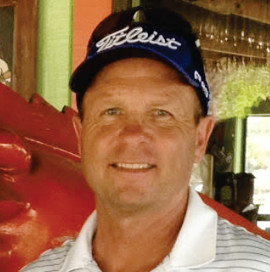 There is nothing more satisfying in golf than hitting shots absolutely flush and solid. The problem is that most players don’t hit the majority of their shots “on the screws” and that solid contact with the ball is often overshadowed by fat, thin and mishit shots.
There is nothing more satisfying in golf than hitting shots absolutely flush and solid. The problem is that most players don’t hit the majority of their shots “on the screws” and that solid contact with the ball is often overshadowed by fat, thin and mishit shots.
One of the greatest ball strikers that I ever witnessed had to be the late Moe Norman. He could hit shot after shot straight as an arrow and absolutely pure. Moe’s ball striking ability was so good that he would often call the shot before he hit it and leave his playing partners in utter dismay.
Great solid shots should not be an accident or a mystery. Instead, if you understand what it takes to produce solid contact shot after shot, then you should be able to rebuild your swing and hit pure shots more often.
There are several key elements that are necessary to produce straight and solid shots. The ‘moment of truth’ in the golf swing occurs at impact. At this point in your swing you need to have a square club-face and correct ball position. Many players pay too much attention to the target when they swing and not enough to the position of the club-face when they address the ball. If you check the position of your club-face at address the two vertical lines created by the grooves on your club-face should be aimed like two lines of a laser directly at your target. If you are hitting an iron the shaft of the club should be leaning slightly towards your target as this will help you make solid contact more often and thin shots less frequently. To ensure consistent ball striking make sure that you consistently place the ball in the right position for the club that you are hitting. Generally most players have three different ball positions. The ball should be near the centre of your stance for mid-irons, forward of centre for your woods and back from centre for the short irons.
At the point of impact it is important to have maintained your spine angle. Some golfers change their spine angle because they find themselves out of balance as they hit the ball. It is important to have good posture and balance at address so that you don’t find yourself out of balance at impact. You also need to make sure that you rotate your hips open through impact so that your weight transfers directly over to your left leg (for right handed golfers).
The final key element that is necessary to produce solid shots is extension. The lead arm in your golf swing should only bend at the wrist and not at the elbow. If you tend to hit shots off of the toe of the club or to the right of your target, then you may want to work on maintaining the length of your lead arm to impact.
Here are a few of my favorite drills to help improve your contact with the ball. To work on hitting down on the ball with your irons, place a tee about one inch in front of the ball. If all of the elements are met through impact then the club should strike the ball first and continue to take the tee out of the ground after the ball is struck. Remember, that a divot is a good thing as long as it is on the target side of the ball.
The impact drill will help you to check your key elements and improve your downswing sequence. Using an 8 or 9 iron, assume your normal starting position with a slightly narrower stance, good balance and posture. Practise keeping your shoulder line square and rotate your hips to an open position as you turn back, keeping your weight on your front foot. It should feel as though you are rotating your front hip joint. Keep your arms, wrists and hands soft, and slowly swing your arms back about 12 inches. The weight of the club will help naturally set your wrists and by rotating your hips forward to an open position will help you to naturally release the golf club to and through impact. Once you find yourself making more consistent contact with the ball, gradually lengthen you swing.
Finally to check where you are impacting the ball on the club-face, try placing a few strips of white masking tape on the face of your clubs the next time you are at the practise range. This will tell you exactly where you are striking the ball on the club-face, so that you can make the suitable adjustments in your setup and swing.
Next Week: Golf Etiquette Tips
Cameron Burechails (Teaching Professional), The Georgian Bay Golf Academy at Meaford Golf Club (705)441-0865 baygolfacademy@bell.net or www.meafordgolf.com












